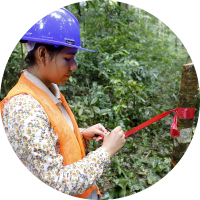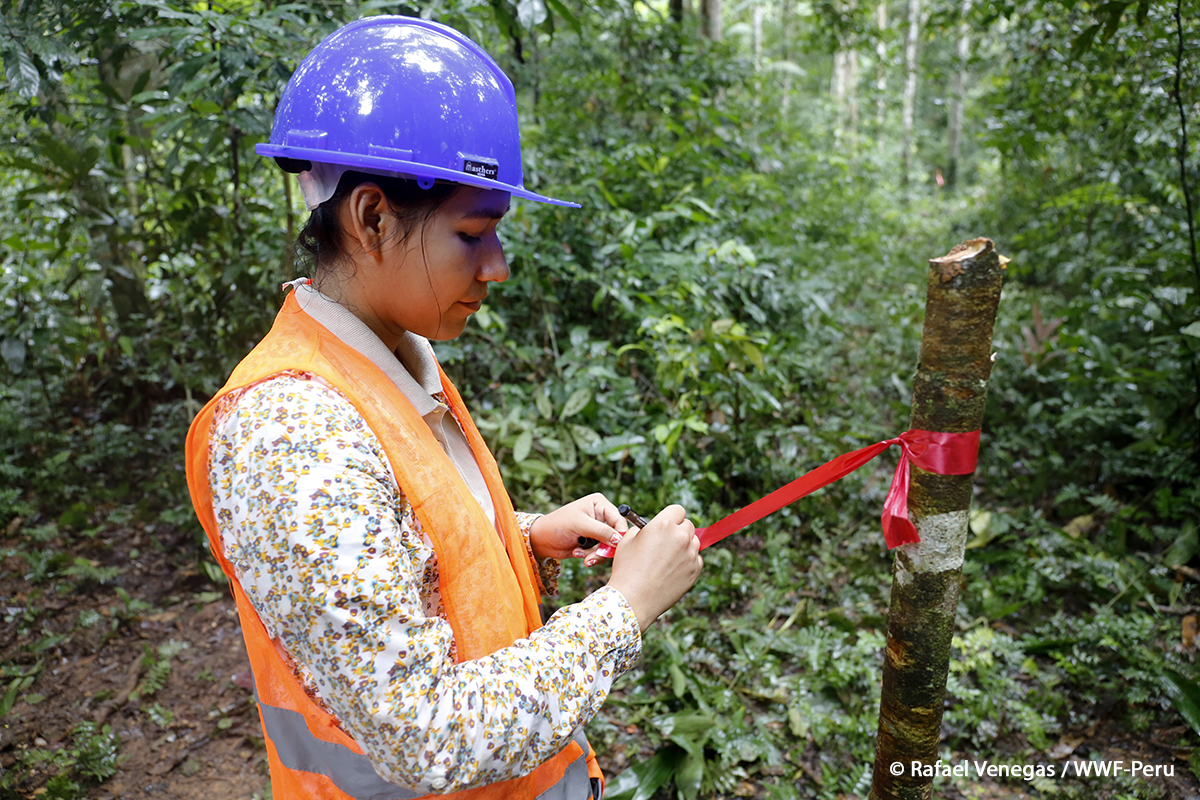
Over 20 per cent of tropical forests globally are designated by national governments for production. As the Paris Agreement comes into force, Reduced Impact Logging that incorporates carbon accounting can play a critical role in helping governments realize their climate targets.
Forests are part of the solution to combat climate change. This was formally recognized by the Paris Agreement adopted at COP21. Now a concerted effort needs to be made at COP22 and beyond to go beyond talk and truly catalyze and accelerate action.
Around the world, forests are still under threat from conversion, unsustainable logging and agriculture. If forests are not useful resources for communities that depend upon them, they are cut down for other means. Degraded forests can change from carbon sinks to carbon sources, accelerating runaway climate change. If we want forests to continue to provide us with resources, keep our climate stable and conserve biodiversity, then we need to tackle the threats they face and ensure that they continue to be a source of livelihood for local communities.
“Climate Smart Forestry” – Reduced Impact Logging (RIL) methods linked to carbon emissions reductions – is one way to tackle this two-fold challenge.
Over 20 per cent of tropical forests globally are designated by national governments for production. Studies show that use of improved timber harvesting practices in the tropical forests designated for logging would retain at least 0.16 gigatons of carbon per year. This equals shutting down one-third of all coal fired power plants in the US.
Take the case of Peru, one of the most mega biodiverse countries in the world. It is also part of the Amazon deforestation front and forest loss is the primary source of greenhouse gas emissions in the country. Natural forests are often seen as an obstacle to economic development, further exacerbating forest loss.
WWF field tested and adapted the Reduced Impact Logging methodology for carbon emission reduction (RIL-C methodology) developed by The Nature Conservancy (TNC). Our main goal was to quantify and compare carbon emissions generated in concessions implementing RIL versus concessions using conventional logging methods. Our study found that RIL concessions that are certified by the Forest Stewardship Council (FSC) are more efficient and fell less trees at greater efficiency. For example, the average carbon emission associated with skidding in concessions applying RIL was 0.56 Mg/C per cubic meter, whereas in conventionally logged forests the average was 0.89 Mg/C per cubic meter. Overall, RIL-C practices reduced emissions by 37 per cent compared to conventional logging.
TNC’s research in Indonesia and Mexico has produced similar results, showing that RIL-C can reduce emissions by as much as 50 per cent across at least 20 per cent of remaining tropical forests.
Studies show that use of improved timber harvesting practices in the tropical forests designated for logging would retain at least 0.16 gigatons of carbon per year. This equals shutting down one-third of all coal fired power plants in the US.
Well-managed forests can play an important role in mitigating climate change and also helping governments achieve their targets on emissions reductions.
It will not be an easy task but the momentum is present to scale up practices that are environmentally beneficial and economically sound. Market demand from consumer countries is increasingly shifting to sustainably produced products and legislative efforts to combat illegal and unsustainable logging are a welcome sign.
Our challenge ahead is to showcase the potential of RIL-C and similar methodologies and make them applicable to multiple geographies. We need to secure direct private sector investment in REDD+ (Reducing Emissions from Deforestation and Forest Degradation) programmes that support Climate Smart Forestry and processing practices; adopt proxy measures supporting sustainable and certified production in national REDD+ strategies; support efforts to align RIL-C with national FSC standards to ensure that this lower impact approach is operationalized; and finance sector-wide emissions reductions programmes for credibly certified forest management.
Forest managers have been unable to access incentives to reduce their climate impacts with RIL practices that reduce carbon emissions. Less than five percent of logging operations in the tropics currently use RIL, so there is a large need to access incentives through adoption of these methodologies in REDD+ strategies.
Providing logging companies with access to financial incentives for climate-friendly practices that reduce the impact of logging operations increases the value-added to standing forests, reduces the likelihood of conversion to other land uses, and encourages greater uptake of sustainable forest management practices.
As countries move towards implementation of the targets set in the Paris Agreement, emissions accounting and forestry need to be on the forefront to ensure that we have healthy forests for the future.

This blog post was originally posted here.
Author:
Gijs Breukink, Coordinator, Responsible Forestry, WWF International
Bio:
Gijs Breukink is the Responsible Forestry Coordinator for the WWF Forest Practice. Gijs specializes in forest governance, certification and corporate engagement and has over a decade experience in working on responsible forestry. Gijs specifically focuses on engaging the forest industry and leading the continued development and implementation of WWF’s Global Forest & Trade Network (GFTN).
forest
